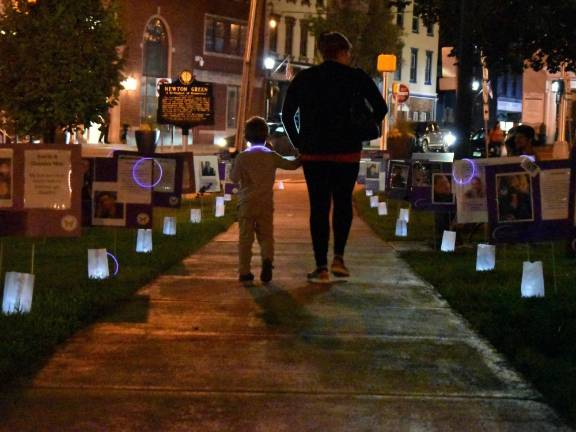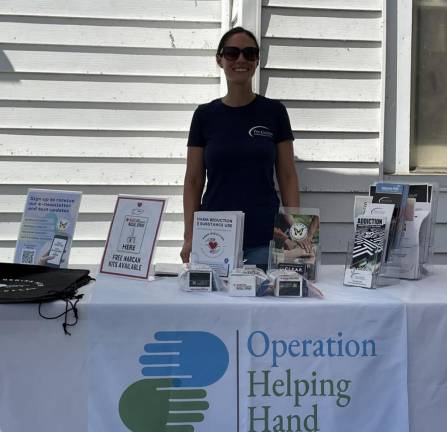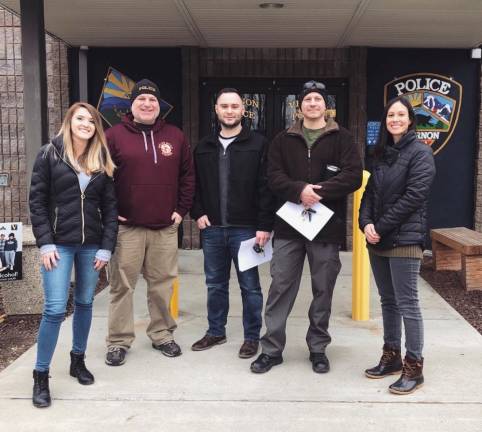Overdose deaths tail off, even as addiction rages on
‘If we didn’t have Narcan those numbers would be a lot, a lot higher’



As fentanyl continues to cut its deadly swath through American communities, a tailing number of deaths by overdose represents a “glimmer of hope there in this otherwise tragic epidemic,” said a New Jersey state police captain.
New Jersey’s 2,893 overdose fatalities last year were the fewest the state has seen since 2017, according to data from the chief state medical examiner’s office.
“Just the recognition – the first step is recognition,” said Azmatullah Hussaini, medical director at Restorative Management Corps in Middletown, N.Y. Only in the past several years has the country finally, belatedly, begun to respond in measure to the magnitude of the epidemic.
“I think 80 to 85 percent of the world’s opioids are being used in America,” Hussaini said. “That’s a really big, alarming statistic. And unfortunately we’re a little bit behind in dealing with this epidemic, but now there are some steps the government is taking to kind of remedy that situation.”
‘People seem to be self-medicating their stress’
The dip in fatal overdoses – while encouraging – does not mean drug itself use is letting up, say those on the front lines. Based on demand for their services, Annmarie Shafer, director of recovery support services at the Center for Prevention & Counseling in Newton, N.J., said people appear to be self-medicating their stress as much as ever.
“We’re in an addiction epidemic – alcohol is probably leading that addiction epidemic,” she said. “but people are medicating themselves and stress is a big factor.
“I think awareness about it is increasing – helping people understand, there’s services, there’s help” Shaffer added, “and you’re not going to get in trouble if you bring that to the forefront, and you’re not going to be stigmatized.”
That sea change in awareness has come with robust government funding for an all-hands-on-deck approach, including “upstream” education in schools, one-on-one recovery coaching, law enforcement training and, critically, harm reduction strategies like the wide distribution of naloxone, the overdose reversal medication; and fentanyl strips, a newly legal drug-testing tool.
The numbers in New York
The complete picture of 2022 is not yet available nationwide, but the most recent data from the Centers for Disease Control and Prevention, updated Jan. 1., show that as of this summer, the downtrend was happening nationwide. The most prominent decrease was on the top line: deaths related to synthetic opioids.
By August, New York’s overdose count had fallen 2.8 percent from its worst point in December 2021, to 3,276 deaths over a 12-month period, according to the latest CDC data.
There is a lesson in caution to be taken from 2018. That year saw a four percent drop in overdose deaths, along with much back-patting and celebration – before we headed into the teeth of the opioid epidemic.
Narcan
The single biggest lifesaver in the short term is widely agreed to be the ready availability of naloxone, commonly called Narcan. “If we didn’t have Narcan those numbers would be a lot, a lot higher,” said Katie Walker, recovery specialist at the Center for Prevention.
Available as a nasal spray, the overdose antidote blocks the effects of opiates in the brain and restores normal breathing. It’s for sale at pharmacies for about $75 per two-dose box with a prescription, but it is often handed out free.
“Even in my car I have a kit,” said Hussaini, who works on the outpatient end of addiction medicine. “Teaching about Narcan and how it’s administered and having all employees carry kits, in and out of the workplace, and giving these kits to any of our patients and having it readily available to them, their friends and family members – these are lifesaving measures.”
On Jan. 9, a Westchester High School student took what he thought was a hit of marijuana from a vape, fell unconscious and was revived by a New Rochelle High School nurse who administered Narcan, school administrators reported.
Naloxone was administered more than five times for every one fatal overdose in 2022, according to an opioid dashboard maintained by New Jersey Attorney General Matthew Platkin.
“That could have been another 15,000 people that died, if they weren’t reversed from their overdose,” said Walker.
Still, the antidote is not a silver bullet, she said. “Narcan only works on opioids, and most drug overdose deaths involve other substances, too.”
Naloxone is now a stock item in school nurses’ offices and college dorms. In New Jersey, high schools are required to have a supply on-hand. It’s required at dormitories of public colleges in New York.
It’s not just high schools, either. At an elementary school in the Pine Bush School District, a nurse administered it to an overdosing parent, the interim superintendent said at a drug forum last year.
In the same district, a middle school principal headed to his car used it on a man overdosing on the sidewalk with his young child nearby.
Other community gathering spots like libraries have begun carrying the overdose antidote. Warwick’s Albert Wisner Public Library considered carrying Narcan about five years ago.
“After research and consultation with the library’s attorney on the variables involved with carrying Narcan, decided not to pursue it at the time,” said Library Director Lisa Laico. “In 16 years working at the library, I’m unaware of any occasion where we needed it – mercifully – but I remain alert.”
Drug check
In the controversial field of harm reduction, fentanyl strips – used to “drug-check” whether a street drug is contaminated with uber-potent fentanyl – remain a particularly hot topic. Much like a pregnancy or Covid test, the paper strip is dipped in water mixed with drug residue, revealing whether the substance contains fentanyl.
Critics say the strips endorse drug use by giving users the green light if the supply is fentanyl-free, and they have come to symbolize the national rift over how to combat the drug epidemic.
While the White House endorsed their use in early 2021 – and New York followed suit – fentanyl strips remained illegal in a majority of states. “Just up until last year, fentanyl test strips were considered drug paraphernalia,” said Walker.
These days, fentanyl is found not only in the vast majority of heroin samples, but also in counterfeit pharmaceutical drugs and even in stimulants like cocaine or methamphetamine, according to the CDC.
“Somebody might get what they think is a Xanax bar from somebody off the street and it’s really not a Xanax, it’s just fentanyl pressed into the shape of a Xanax,” said Walker. “So if somebody knew that’s what it was, maybe they wouldn’t use it, or they would use it differently than if they thought it was a real Xanax. They’re really known to change people’s substance use behavior. Usually people will use less at once.”
More opportunities to get help
Given that fentanyl is in a class by itself in terms of lethality, even a modest decline in fatal overdoses is a major victory, said Walker.
“We’re dealing with the most powerful, potent drugs that mankind has ever faced,” she said. “People have been doing drugs since the beginning of time, but people weren’t dying at the rates that they’re dying now,
Between the internet, which makes it easy for anyone to score drugs without leaving home, and payment alternatives like bitcoin that confound enforcement, access has never been easier.
“In the 80s you weren’t ordering something off the internet and having it come to your house. We’re combatting a lot of things now that we’ve never faced before, so if the numbers are coming down – like, at all – it is really significant.”
Walker is in recovery from to substance use herself, having lost her best friend to an overdose in 2010. At the time, Walker had begun addiction treatment and the two had lost touch. “She was just left there.”
Today, Walker believes her best friend’s story might well have turned out differently. “You always think about, would they still be there if this was available when they were struggling?” she said. “I think she could have had a lot of opportunities to get connected to help way before that, you know, that last overdose.”